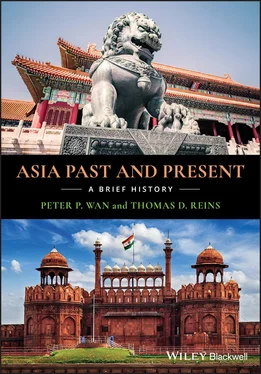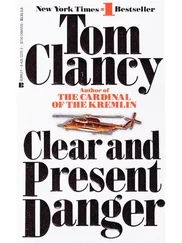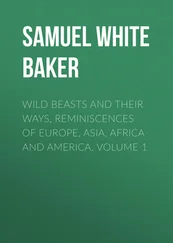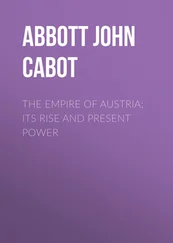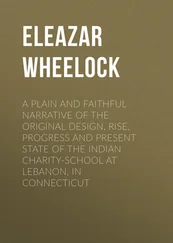Below the surface, however, seismic changes long underway began to ascend. Japan and the “little dragons” of Taiwan, South Korea, Hong Kong, and Singapore had become wealthy through more open market practices, and they had also transitioned to more democratic political arrangements. More than a decade before the Berlin Wall fell in November 1989, Deng Xiaoping’s China began to dismantle the Maoist economic nightmare and usher in some prosperity while gradually transitioning from totalitarian rule to a “soft authoritarian” control. Meanwhile, politics began transitioning from “soft authoritarianism” in Taiwan and South Korea to full‐fledged democracy. In March 1985, the new Soviet leader Mikhail Gorbachev launched a reform movement to rescue a collapsing Soviet system. Labeled glasnost (liberalization) and perestroika (reconstruction), these programs gave Vietnam, a client state of the Soviet Union, the opportunity to institute in 1986 its own necessary reforms. Dubbed doi moi , it set up a market‐oriented economy and commenced a less harsh political regime.
The formal collapse of the Soviet Union in 1991 did not, as Francis Fukuyama has interestingly argued, bring about the “end of history,” by which he meant the global prevalence of some form of liberal politics and market economics. The war on terror provides ample evidence that a significant part of the world resists such a harmonious scenario. Moreover, two major Asian powers, China and Russia, still cling to what appears to be not‐so‐soft authoritarian political practices. And numerous Maoist and other insurgent or separatist movements can be found throughout the continent. Perhaps in the more distant future, Fukuyama’s world of liberal ideas and institutions will prevail in Asia. But the larger issue will likely be not whether liberalism and modernization will triumph, but how some variation of the two will be adapted to each Asian culture.
This search for and adaptation of a new order did not begin in the twentieth century, nor did the processes occur quickly or without turmoil. In 1783 the United States became formally independent, but freedom from British rule merely began a new stage of development. What kind of country would emerge? America’s first constitution, the Articles of Confederation, spoke loudly for small government and agrarian economics, but less than a decade later the Founding Fathers met at Philadelphia to craft a new constitution. The final product gave birth to a stronger central government, whose first leaders favored a more commercial economy. The War of 1812, the “Second War for Independence,” convinced America’s elite that a native industrial infrastructure needed to be built to augment the agricultural base in order for the country to be truly independent of Europe. All the while, the ugly issue of slavery continually forced Americans to raise the question of what kind of nation the people wanted. Even the Civil War failed to fully address that question. The problems involved in becoming modern affected the early industrializing nations of Europe and Japan. To expect the nations of Asia to avoid turmoil is to ignore historical experience.
The people of Asia will ultimately ask and answer the question of what kind of country they desire. The answer to this question will not likely emerge until the basic needs of the citizenry are met. How will the professed traditions of the past and perceived needs of the present combine with modern techniques and standards to produce a livable future? There will be toil and trouble along the road, and it remains uncertain that liberal core beliefs will prevail. But if they do, they will be liberal beliefs with distinctly Asian characteristics, reflecting the goals and principles of each particular Asian but increasingly global culture.
Part 1 Asian and Non–Asian Cultures Interact to circa 1850 CE
Introduction to Part 1 Asian and Non-Asian Cultures Interact to circa 1850 CE
Human development on the Asian continent passed through four distinct stages of historical and cultural development by the mid‐nineteenth century of the Common Era (CE): Paleolithic, Neolithic, Pastoral Nomadic, and Civilized. Paleolithic humans departed their African origins for other parts of the world, arriving in Asia as early as 60,000 years ago. They brought with them ways of doing things, and those ways we collectively refer to as culture—people speaking, earning a living, making war, explaining the world, organizing the group, and so forth. As Paleolithic peoples spread across Asia, different kinds of culture appeared, reflecting diverse territories, distinctive climates, and language variations, circumstances that undoubtedly influenced group customs and values. Thus, as the Neolithic culture began to appear roughly 10,000 years ago, Asia boasted a wide range of cultural practices, though these peoples remained chiefly hunters and gatherers. The transition from Paleolithic existence to Neolithic farming occurred gradually and unevenly in Asia. Neolithic farmers experienced a much more abundant existence than their Paleolithic hunting and gathering predecessors. But as farm populations grew as a result of better diets and as the farmland lost its fertility due to soil exhaustion, villages had to move to virgin territory, and over the course of millennia eventually growers wore out the supply of arable land in Asia. These movements of farmers eventually led to the emergence of both Pastoral Nomadic and Civilized ways of life.
Pastoral Nomadic life likely evolved as the territory Paleolithic hunters and gatherers once depended on for livelihood steadily became cropland and villages for farmers. Not only did much of the plant and animal life get displaced as farmers cleared woodland for fields, but these cultivators also staked exclusive claim to surrounding terrain. Thus denied a means of livelihood, Paleolithic people were pushed to increasingly marginal territory. They became pastoral nomads by taking their hunting and gathering skills, as well as their awareness of land cultivation and animal domestication, to begin a new livelihood in what became known as the Eurasian steppe. This chiefly involved the herding of animals, though some agriculture frequently supplemented the skin, meat, and milk products of the herds. These pastoral nomads lived in tribes, which frequently came into conflict with one another, and once civilized life emerged, these tribes traded and warred with civilizations south of the steppe. Known by many names in different languages, the city dwellers typically called these pastoral nomads “barbarians.”
Civilized life likely began in Asia along the Indus River in what is today Pakistan sometime between 3000 and 2500 BCE. Several centuries later, approximately 2000 BCE, city life in China commenced near the Yellow River in today’s Henan Province. In both cases, dry climates probably pushed Neolithic farmers to the edge of subsistence, requiring them either to go the way of pastoral nomads or to find a means of adapting farming to hostile geography. The introduction of irrigation allowed farmers to settle along rivers. In normal times rivers provided water for fields, and when flooding occurred it resulted in the depositing of new topsoil on croplands. This in turn minimized the need for villagers to relocate in search of fertile land, as flooding constantly re‐fertilized the farmers’ fields. Reliable supplies of water and productive soil generated such large food surpluses that non‐farming occupations could be supported. Instead of just one basic occupation found in Paleolithic times—hunting and gathering; just one occupation in Neolithic times—farming; and just one occupation in Pastoral Nomadic settings—herding, Civilized societies could boast a wide variety of specialized livelihoods.
Читать дальше
